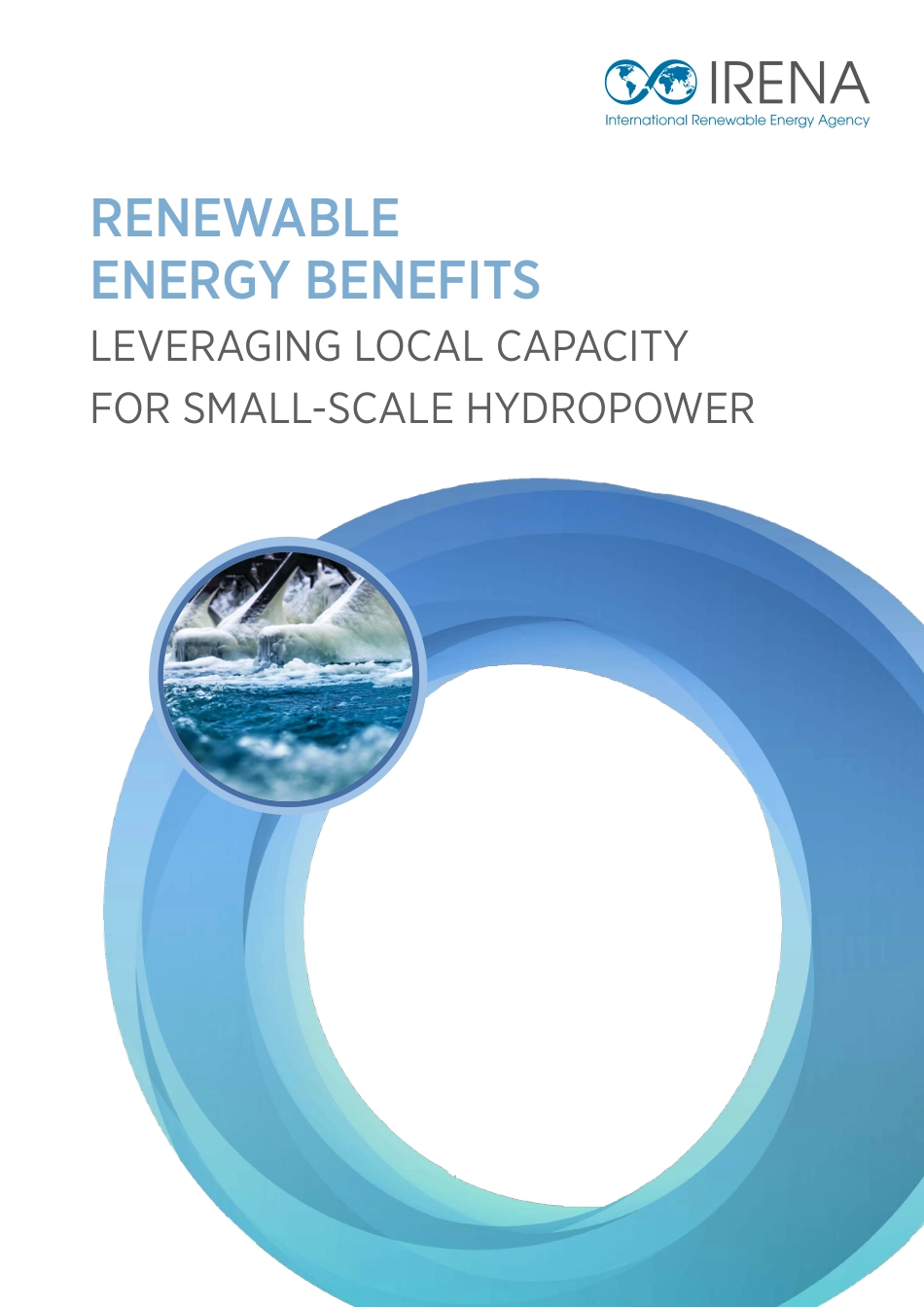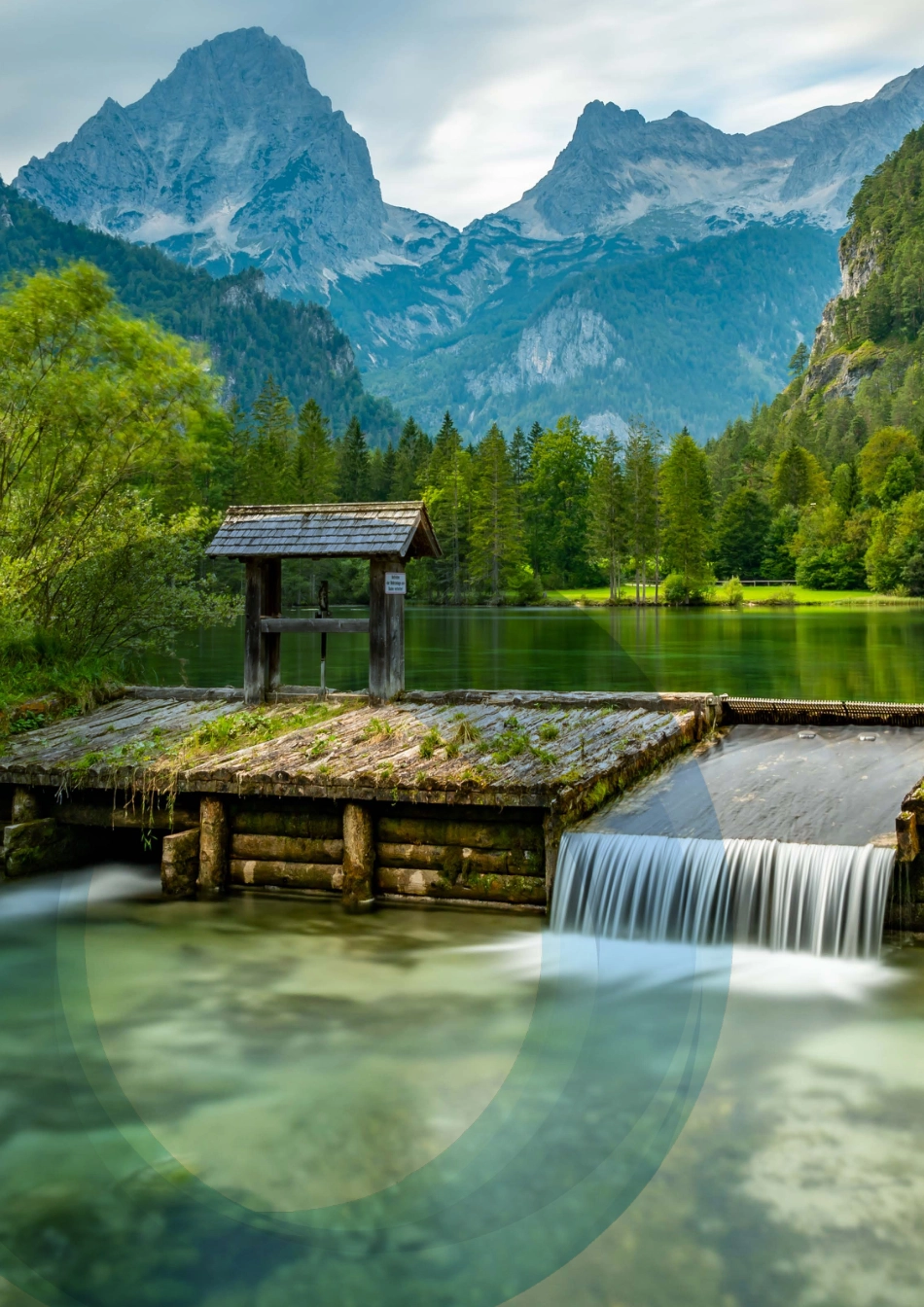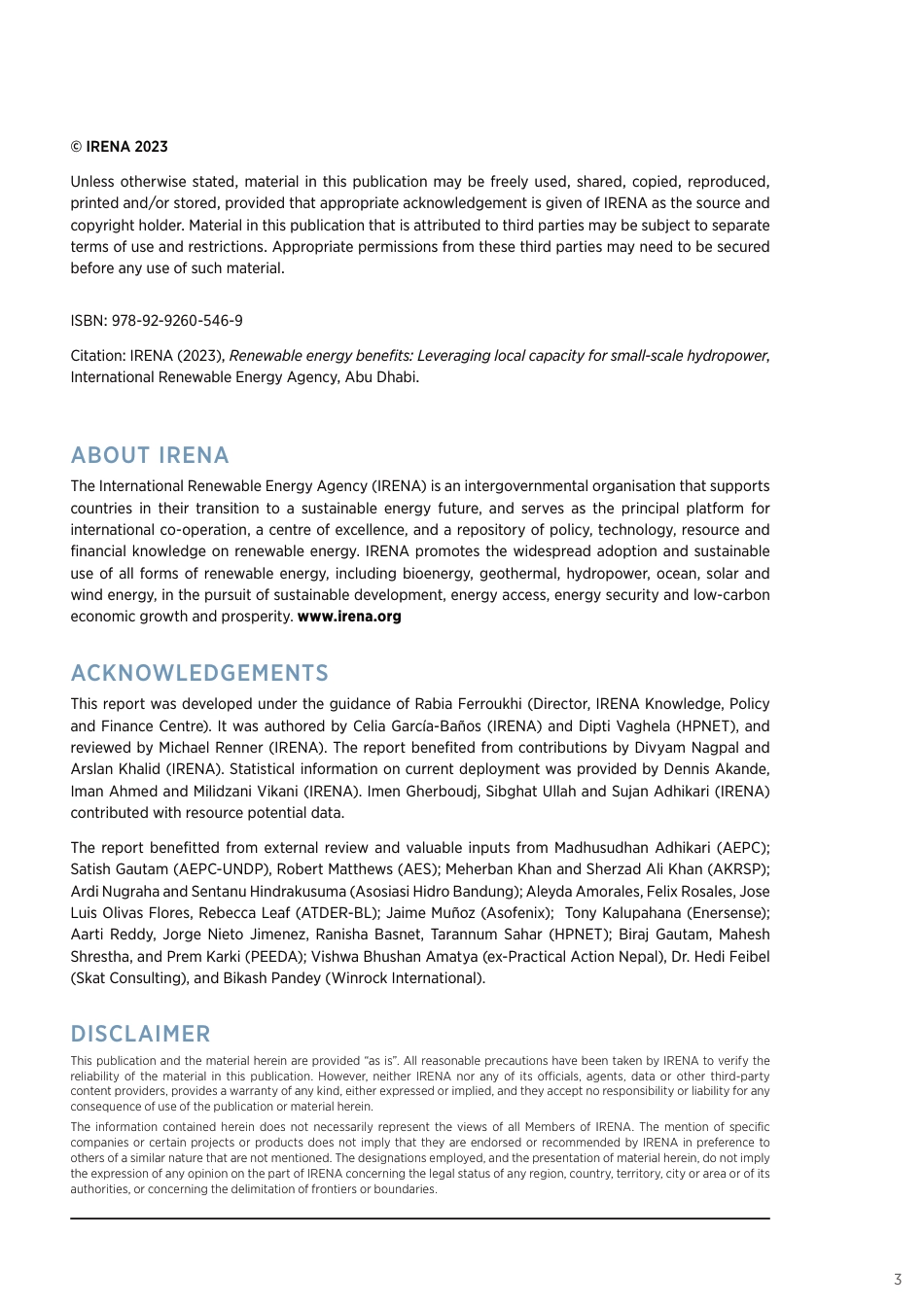RENEWABLE ENERGY BENEFITSLEVERAGING LOCAL CAPACITY FOR SMALL-SCALE HYDROPOWER3ABOUT IRENAThe International Renewable Energy Agency (IRENA) is an intergovernmental organisation that supports countries in their transition to a sustainable energy future, and serves as the principal platform for international co-operation, a centre of excellence, and a repository of policy, technology, resource and financial knowledge on renewable energy. IRENA promotes the widespread adoption and sustainable use of all forms of renewable energy, including bioenergy, geothermal, hydropower, ocean, solar and wind energy, in the pursuit of sustainable development, energy access, energy security and low-carbon economic growth and prosperity. www.irena.orgACKNOWLEDGEMENTSThis report was developed under the guidance of Rabia Ferroukhi (Director, IRENA Knowledge, Policy and Finance Centre). It was authored by Celia García-Baños (IRENA) and Dipti Vaghela (HPNET), and reviewed by Michael Renner (IRENA). The report benefited from contributions by Divyam Nagpal and Arslan Khalid (IRENA). Statistical information on current deployment was provided by Dennis Akande, Iman Ahmed and Milidzani Vikani (IRENA). Imen Gherboudj, Sibghat Ullah and Sujan Adhikari (IRENA) contributed with resource potential data. The report benefitted from external review and valuable inputs from Madhusudhan Adhikari (AEPC); Satish Gautam (AEPC-UNDP), Robert Matthews (AES); Meherban Khan and Sherzad Ali Khan (AKRSP); Ardi Nugraha and Sentanu Hindrakusuma (Asosiasi Hidro Bandung); Aleyda Amorales, Felix Rosales, Jose Luis Olivas Flores, Rebecca Leaf (ATDER-BL); Jaime Muñoz (Asofenix); Tony Kalupahana (Enersense); Aarti Reddy, Jorge Nieto Jimenez, Ranisha Basnet, Tarannum Sahar (HPNET); Biraj Ga...



